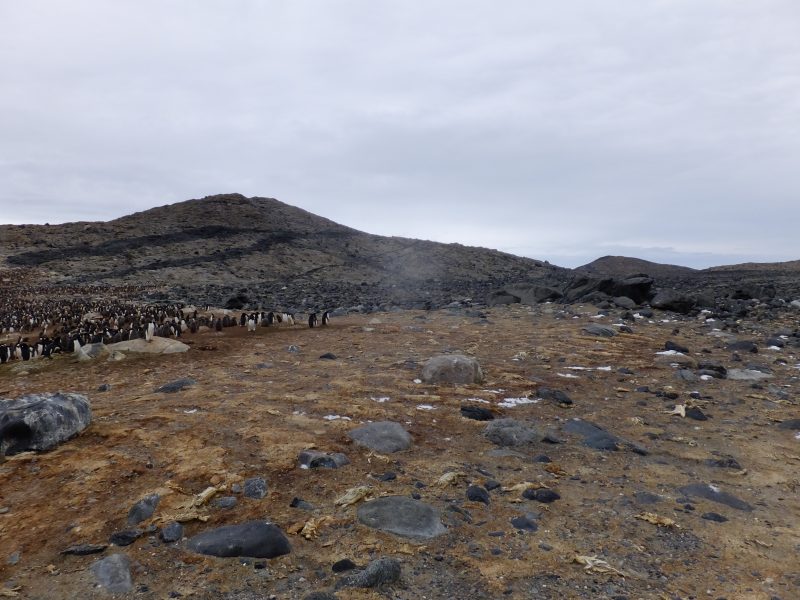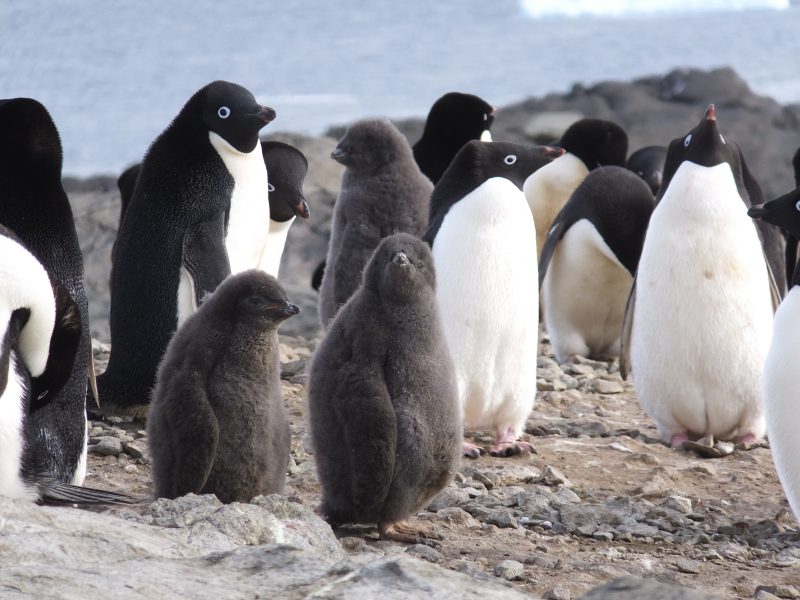14 September 2018
Mummified penguins tell of past and future deadly weather
Posted by larryohanlon
By Larry O’Hanlon
New research links the mummified remains of penguin chicks in Antarctica to two massive weather-related calamities that could become more commonplace with climate change.
Chinese and Australian researchers found the mummified carcasses of hundreds of Adélie penguins on Long Peninsula, East Antarctica, in sediments that not only recorded heavy run-off events, but also helped to unlock the ages of the events.
Taken individually, penguin carcasses are not unusual, explained Yuesong Gao, a co-author of the paper in Journal of Geophysical Research – Biogeosciences, published by the American Geophysical Union. But when the researchers studied the sediments in which they found the mummies, most of the carcasses turned out to be from two specific calamities that occurred in breeding colonies about 750 and 200 years ago, according to radiocarbon dating of the mummies and the sediments.
“First of all, the extent of carcasses and abandoned colonies struck us,” said Gao, of the University of Science and Technology of China in Hefei. “Then we were surprised by the consistent dates of the mummies. We had expected a much larger range of dates.”

Penguin graveyard: 200-year-old abandoned penguin colony, littered with mummified carcasses. Image courtesy of Yuesong Gao.
The researchers were also struck by the unusually thick layers of sediments in which the mummies were buried. These were evidence of a lot of water flowing over the surface over a short period of time. That would require anomalously wet weather in hyper-arid Antarctica, and it’s particularly deadly to penguin chicks which, unlike their parents, have not yet developed waterproof feathers. Snowy and rainy weather can soak chicks to the skin and sap away their body heat, causing them to weaken and die from hypothermia.
“We found that relatively short periods of climate anomaly in the past have caused terrible consequences to the penguin population,” said Gao.
The meteorological recipe that best explains the penguin colony collapses is a climate anomaly known for bringing a lot of moisture south from the mid-latitudes and increasing near-shore ice – a pattern called zonal wave number 3, or ZW3, for short.
The frequency of ZW3 anomalies has increased in the late 20th century, as the Earth’s climate has changed in response to anthropogenic greenhouse gas emissions, according to previous research. As a result, some places in Antarctica have seen more snow accumulation between 1970 and 2009 than in the previous 1,000 years, the researchers report.

Another abandoned penguin colony with mummified carcasses. This graveyard is dated to 750 years ago. Living penguins can be seen in the upper left. Image courtesy of Yuesong Gao.
If die-off events like those of 200 and 750 years ago become more common, it could be very bad news for the Adélie penguins, according to the study’s authors.
“We should pay attention to the threats of climate change to penguins,” Gao said.
Larry O’Hanlon is a freelance science writer. He manages the AGU Blogosphere and coordinates AGU social media.




 GeoSpace is a blog on Earth and space science, managed by AGU’s Public Information staff. The blog features posts by AGU writers and guest contributors on all sorts of relevant science topics, but with a focus on new research and geo and space sciences-related stories that are currently in the news.
GeoSpace is a blog on Earth and space science, managed by AGU’s Public Information staff. The blog features posts by AGU writers and guest contributors on all sorts of relevant science topics, but with a focus on new research and geo and space sciences-related stories that are currently in the news.